
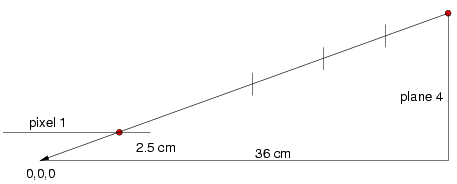
However, the pi, K decays have larger DCA's, so this may be useful for rejecting muons from pi, K.
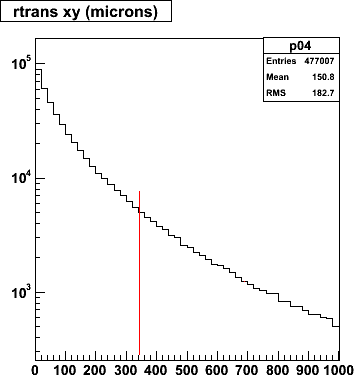
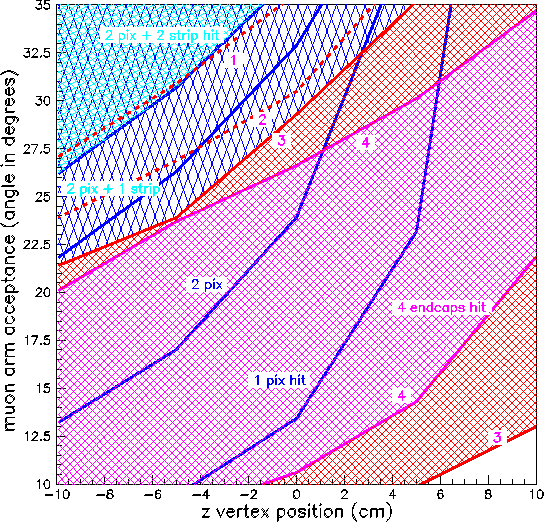
| The detector planes are subdivided into 24 panels, each of which has silicon on the front and the back, which in turn is split down the middle into two rows of (mini)strips. Therefore a strip spans 1/96th of 2pi. By rotating each disk by 1/4 of this, the phi-resolution for tracks that come roughly from the vertex is limited to an arc of 0.94°, with a sigma of 0.27°. | 
|
| For a track at theta=20°, if we combine such a phi-measurement in plane 4 (at z=36cm) with a point on the first barrel pixel layer (r=2.5cm, drphi=50um), we can achive a resolution in the transverse plane of 0.12cm/sqrt(12) = 345 um. Is this enough for some discrimination? | 
|
| For pythia events c->D->mu, I point the muon track back to the x-y
plane. Shown is the distribution of of the distance of this projection from
the origin. 345 um is of limited help - only 15% of the entries are
above the mark at 345.
However, the pi, K decays have larger DCA's, so this may be useful for rejecting muons from pi, K. | 
|
| The acceptance for this is limited to the pink hatched are above the blue line labeled '1 pix hit'. | 
|
Modified vtx pisa code now allows staggering of the strips, by making small rotations of the individual planes, in these examples in the clockwise direction when looking North (+z). Note the green box extends in the +x, +y, +z direction. In order to show the rotations, sector 0 has been turned off.
| This shows all 8 planes with no rotations. | 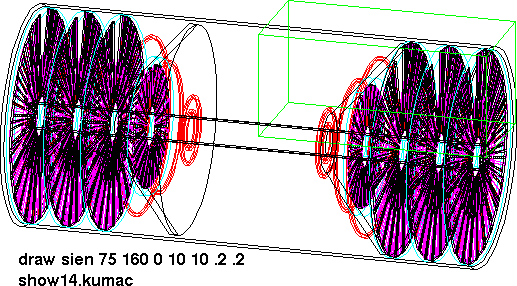
|
| Here the planes are rotated (south the north) by 0, 10, 20, 30, 0, 10, 20, 30°
In the second image layers 6,7,8 have been removed to show the same staggering in layers 9, 10, 11, 12. | 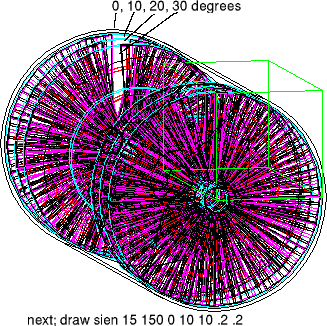
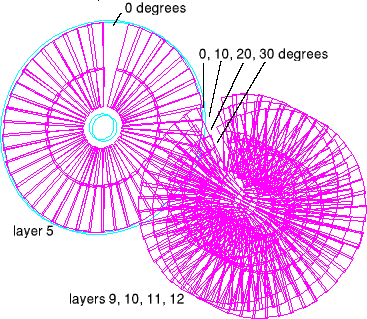
|
| Removing sector 0 from each disk shows where we start counting sectors and in which direction. I notice that the sector counting goes clockwise for the North arm, and counterclockwise on the south. Hugo, should we turn this around? | 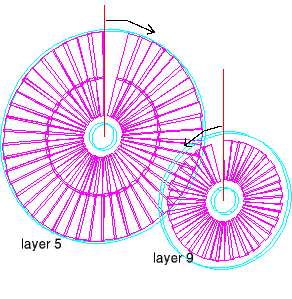
|
| In this version (13 Dec 2006) I fixed the sector counting direction to be in positive phi everywhere. The first three sectors in each layer, as well as layers 7 and 8, are not shown. Phi=0 is now also fixed along the positive x-axis, and phi runs in th positive direction everywhere. | 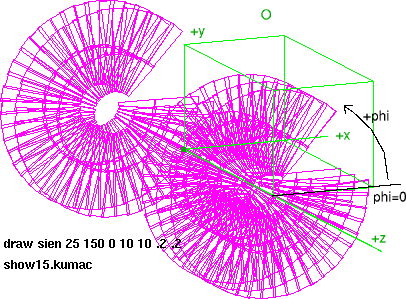
|
Looking at the South arm from z=0. In phnxSili.par, parameter stagger controls whether
or not staggering is turned on. For now, 0 and 1 are valid:
if (stagger.eq.1) then
stag_ang( 5) = 0. ! staggering angle
stag_ang( 6) = 0.9375 ! 1x 360 / 96 / 4
stag_ang( 7) = 1.8750 ! 2x
stag_ang( 8) = 2.8125 ! 3x
stag_ang( 9) = 0. ! 0x
stag_ang(10) = 0.9735 ! 1x
stag_ang(11) = 1.8750 ! 2x
stag_ang(12) = 2.8125 ! 3x
endif
Because of overlaps, this may not be the best way (angles too small).
| 
|
| The cables between the edges of the stations and the big wheels can be adapted to 'undo' the station staggering, as shown here. Each cable corresponding to a station gets a specifig jog, such that the cables arrive at the big wheels on top of each other (like before). | 
|